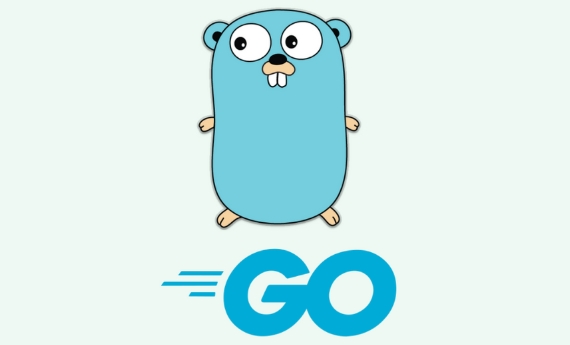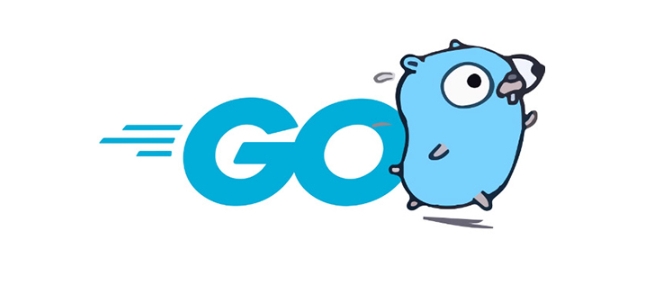To develop a Go-language Web application firewall (WAF), you need to start with core functions: 1. Request interception and parsing, and use the net/http or Gin and Echo framework to parse request parts before business logic; 2. Attack feature recognition, match SQL injection, XSS and other attacks through precompiled regular and OWASP rules; 3. Rule management and dynamic loading, support JSON/database storage and implement hot updates through API; 4. Logging and response processing, record interception details and return 403 responses, and support observation mode to avoid manslaughter.

If you plan to use Go to develop a Web Application Firewall (WAF), you need to start with the most core functions: intercepting malicious requests, identifying attack modes, and supporting flexible rule configuration. The Go language itself has obvious advantages in performance and concurrent processing, and is very suitable for this type of network middleware.

Here are some key links that you can't avoid:
Request interception and parsing
The first step of WAF is to "see" all HTTP requests. You can build middleware based on net/http package, or use more mature frameworks such as Gin and Echo to implement plug-in filtering mechanism.

- Put WAF before all business logic as a prefilter
- Resolve various parts of the request: URL, Headers, Query Params, Body, etc.
- Pay attention to Body buffered reading of POST/PUT requests (because it is read only once by default)
To give a simple example: if you want to check whether the User-Agent is empty, you need to extract the field from the header and determine whether it exists or matches the blacklist.
Attack feature recognition
The core capability of WAF lies in identifying common attack behaviors, such as SQL injection, XSS, command injection, etc. You need to build a set of rules engines to match these characteristics.

Common methods include:
- Regular expressions match sensitive keywords, such as
' or '1'='1,<script></script>, etc. - Use predefined rulesets, such as OWASP ModSecurity rules (can be used as a reference)
- Rating special character combinations and intercept them if they exceed the threshold.
Note: If the regular writing is not done well, it will slow down performance. It is recommended to compile the rules in advance and control the number and complexity of the rules.
Rule management and dynamic loading
The hard-coded rules are certainly not flexible enough. A good WAF requires hot updates to support rules, and is best configured remotely through the interface.
You might consider:
- Store rules in JSON files or databases
- Load at startup, check regularly for changes at runtime
- Provides REST interface for adding, deleting, and modifying rules
- Set enable status and priority for each rule
For example, you have added a new XSS attack detection rule, which can be sent to all WAF instances through the API and take effect immediately without restarting the service.
Logging and response processing
After discovering suspicious requests, in addition to intercepting, you also have to record them for subsequent analysis.
The log should at least include:
- Client IP and User-Agent
- Intercepted URL and request method
- Matched rule ID or name
- Timestamp and operation result (blocking/release)
As for the response, it is generally reasonable to return 403 Forbidden. You can also add a switch to make certain rules just record and not intercept them, and are used for observation stages.
Basically that's it. Using Go to make WAF is not complicated, but there are many details, especially when it comes to a trade-off between performance and accuracy. For example, you should avoid the impact of normal user access due to manslaughter, and you should also prevent the missed real attacks.
The above is the detailed content of Go Web Application Firewall (WAF) Development. For more information, please follow other related articles on the PHP Chinese website!

Hot AI Tools

Undress AI Tool
Undress images for free

Undresser.AI Undress
AI-powered app for creating realistic nude photos

AI Clothes Remover
Online AI tool for removing clothes from photos.

Clothoff.io
AI clothes remover

Video Face Swap
Swap faces in any video effortlessly with our completely free AI face swap tool!

Hot Article

Hot Tools

Notepad++7.3.1
Easy-to-use and free code editor

SublimeText3 Chinese version
Chinese version, very easy to use

Zend Studio 13.0.1
Powerful PHP integrated development environment

Dreamweaver CS6
Visual web development tools

SublimeText3 Mac version
God-level code editing software (SublimeText3)

Hot Topics
 Strategies for Integrating Golang Services with Existing Python Infrastructure
Jul 02, 2025 pm 04:39 PM
Strategies for Integrating Golang Services with Existing Python Infrastructure
Jul 02, 2025 pm 04:39 PM
TointegrateGolangserviceswithexistingPythoninfrastructure,useRESTAPIsorgRPCforinter-servicecommunication,allowingGoandPythonappstointeractseamlesslythroughstandardizedprotocols.1.UseRESTAPIs(viaframeworkslikeGininGoandFlaskinPython)orgRPC(withProtoco
 Understanding the Performance Differences Between Golang and Python for Web APIs
Jul 03, 2025 am 02:40 AM
Understanding the Performance Differences Between Golang and Python for Web APIs
Jul 03, 2025 am 02:40 AM
Golangofferssuperiorperformance,nativeconcurrencyviagoroutines,andefficientresourceusage,makingitidealforhigh-traffic,low-latencyAPIs;2.Python,whileslowerduetointerpretationandtheGIL,provideseasierdevelopment,arichecosystem,andisbettersuitedforI/O-bo
 Is golang frontend or backend
Jul 08, 2025 am 01:44 AM
Is golang frontend or backend
Jul 08, 2025 am 01:44 AM
Golang is mainly used for back-end development, but it can also play an indirect role in the front-end field. Its design goals focus on high-performance, concurrent processing and system-level programming, and are suitable for building back-end applications such as API servers, microservices, distributed systems, database operations and CLI tools. Although Golang is not the mainstream language for web front-end, it can be compiled into JavaScript through GopherJS, run on WebAssembly through TinyGo, or generate HTML pages with a template engine to participate in front-end development. However, modern front-end development still needs to rely on JavaScript/TypeScript and its ecosystem. Therefore, Golang is more suitable for the technology stack selection with high-performance backend as the core.
 How to install Go
Jul 09, 2025 am 02:37 AM
How to install Go
Jul 09, 2025 am 02:37 AM
The key to installing Go is to select the correct version, configure environment variables, and verify the installation. 1. Go to the official website to download the installation package of the corresponding system. Windows uses .msi files, macOS uses .pkg files, Linux uses .tar.gz files and unzip them to /usr/local directory; 2. Configure environment variables, edit ~/.bashrc or ~/.zshrc in Linux/macOS to add PATH and GOPATH, and Windows set PATH to Go in the system properties; 3. Use the government command to verify the installation, and run the test program hello.go to confirm that the compilation and execution are normal. PATH settings and loops throughout the process
 Resource Consumption (CPU/Memory) Benchmarks for Typical Golang vs Python Web Services
Jul 03, 2025 am 02:38 AM
Resource Consumption (CPU/Memory) Benchmarks for Typical Golang vs Python Web Services
Jul 03, 2025 am 02:38 AM
Golang usually consumes less CPU and memory than Python when building web services. 1. Golang's goroutine model is efficient in scheduling, has strong concurrent request processing capabilities, and has lower CPU usage; 2. Go is compiled into native code, does not rely on virtual machines during runtime, and has smaller memory usage; 3. Python has greater CPU and memory overhead in concurrent scenarios due to GIL and interpretation execution mechanism; 4. Although Python has high development efficiency and rich ecosystem, it consumes a high resource, which is suitable for scenarios with low concurrency requirements.
 How to build a GraphQL API in golang
Jul 08, 2025 am 01:03 AM
How to build a GraphQL API in golang
Jul 08, 2025 am 01:03 AM
To build a GraphQLAPI in Go, it is recommended to use the gqlgen library to improve development efficiency. 1. First select the appropriate library, such as gqlgen, which supports automatic code generation based on schema; 2. Then define GraphQLschema, describe the API structure and query portal, such as defining Post types and query methods; 3. Then initialize the project and generate basic code to implement business logic in resolver; 4. Finally, connect GraphQLhandler to HTTPserver and test the API through the built-in Playground. Notes include field naming specifications, error handling, performance optimization and security settings to ensure project maintenance
 Choosing a Microservice Framework: KitEx/GoMicro vs Python Flask/FastAPI Approaches
Jul 02, 2025 pm 03:33 PM
Choosing a Microservice Framework: KitEx/GoMicro vs Python Flask/FastAPI Approaches
Jul 02, 2025 pm 03:33 PM
The choice of microservice framework should be determined based on project requirements, team technology stack and performance expectations. 1. Given the high performance requirements, KitEx or GoMicro of Go is given priority, especially KitEx is suitable for complex service governance and large-scale systems; 2. FastAPI or Flask of Python is more flexible in rapid development and iteration scenarios, suitable for small teams and MVP projects; 3. The team's skill stack directly affects the selection cost, and if there is already Go accumulation, it will continue to be more efficient. The Python team's rash conversion to Go may affect efficiency; 4. The Go framework is more mature in the service governance ecosystem, suitable for medium and large systems that need to connect with advanced functions in the future; 5. A hybrid architecture can be adopted according to the module, without having to stick to a single language or framework.
 Go sync.WaitGroup example
Jul 09, 2025 am 01:48 AM
Go sync.WaitGroup example
Jul 09, 2025 am 01:48 AM
sync.WaitGroup is used to wait for a group of goroutines to complete the task. Its core is to work together through three methods: Add, Done, and Wait. 1.Add(n) Set the number of goroutines to wait; 2.Done() is called at the end of each goroutine, and the count is reduced by one; 3.Wait() blocks the main coroutine until all tasks are completed. When using it, please note: Add should be called outside the goroutine, avoid duplicate Wait, and be sure to ensure that Don is called. It is recommended to use it with defer. It is common in concurrent crawling of web pages, batch data processing and other scenarios, and can effectively control the concurrency process.






